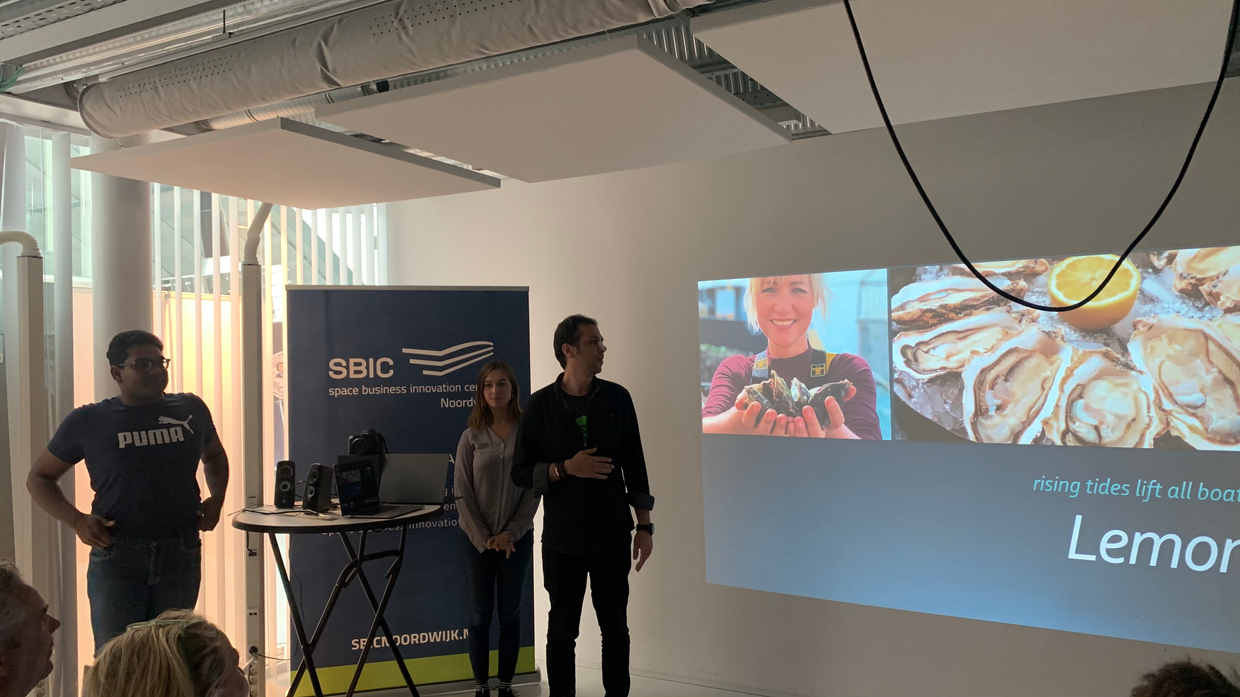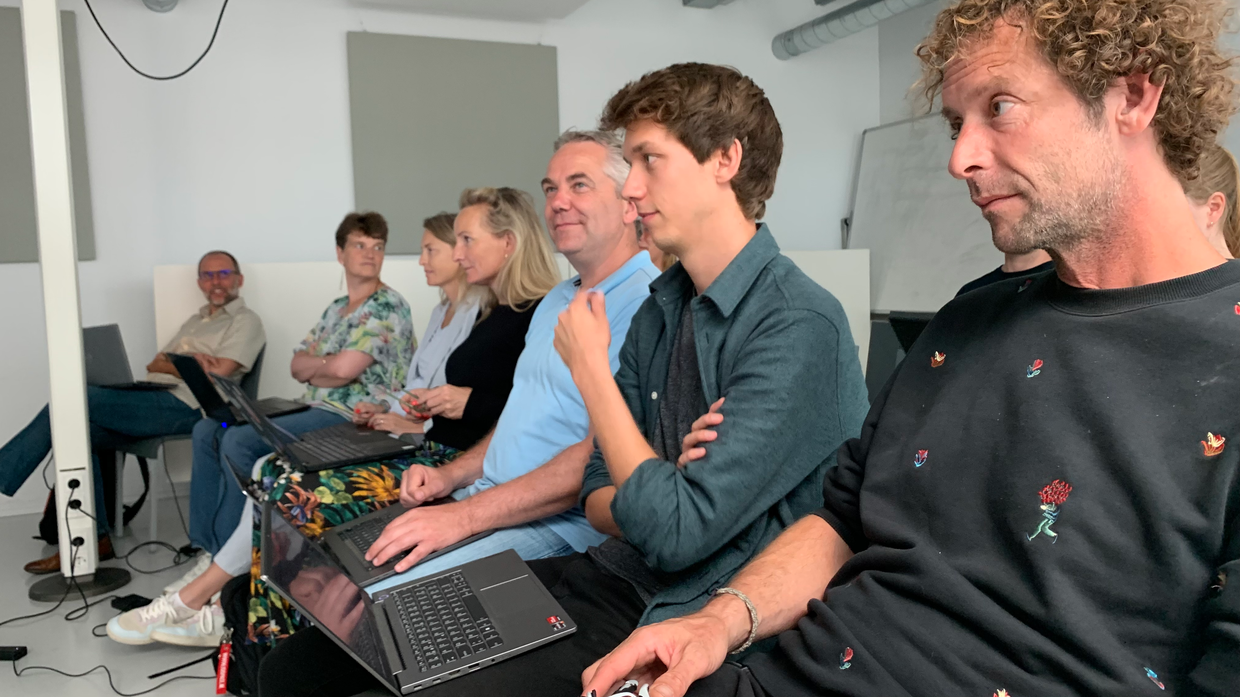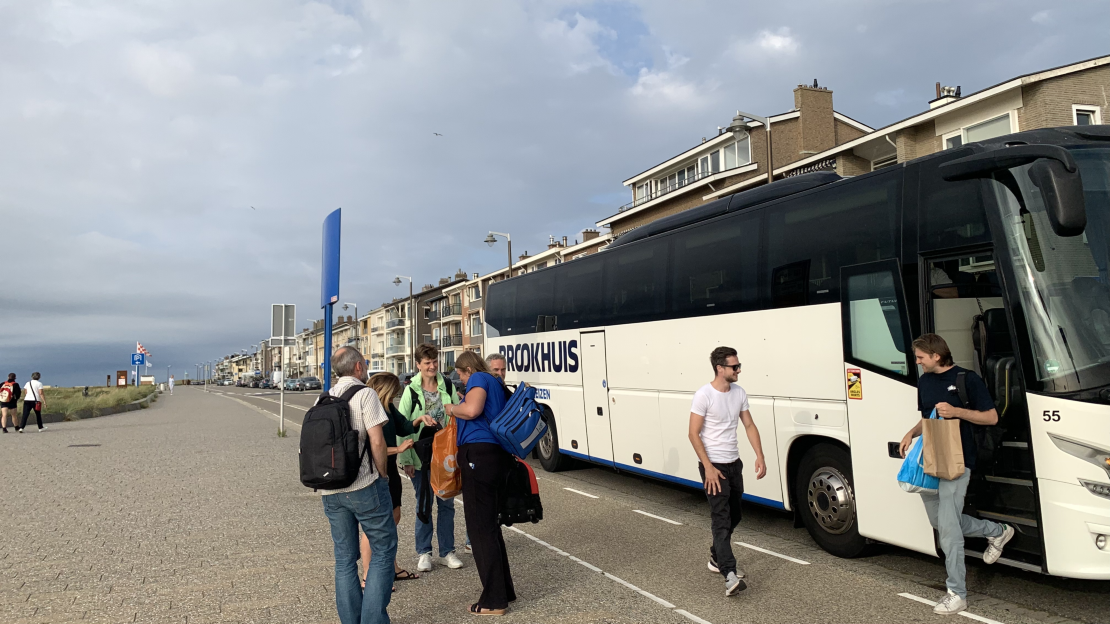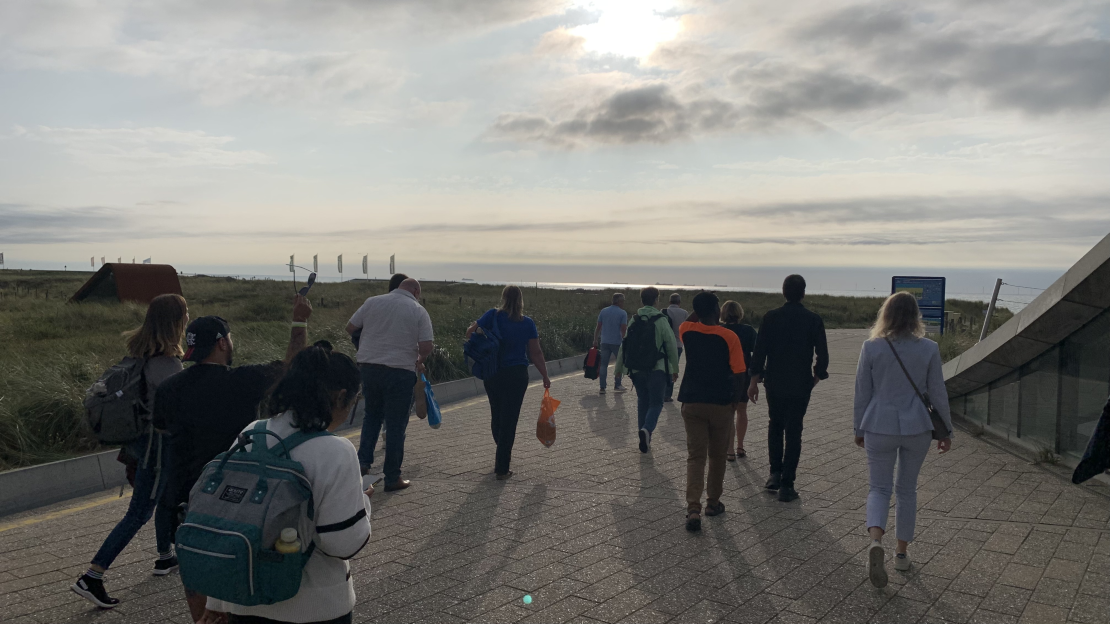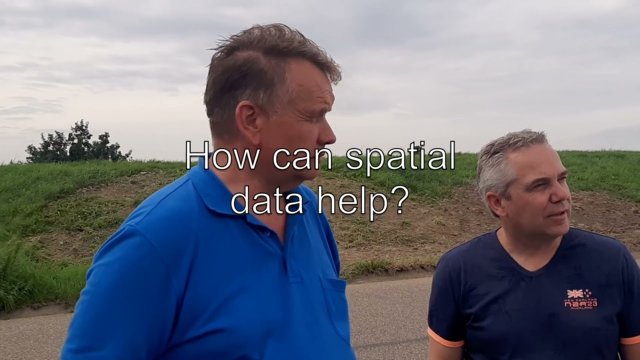Aleksandra Bratic, Ali Fakour and Sinoj Kokulasingam are three Master's students from the GEM MSc who recently won the last edition of the yearly Busathon Joint Event. They creatively designed an app-based collaboration that would provide oyster farmers with GIS data they need and connection to scientists in the field to avoid oyster predators and improve oyster management.
A journey across the Netherlands
During this event, 14 innovative GEM students met with 5 different problem owners across the Netherlands. After carefully listening to the problems that business owners encounter, each student team crafts a solution using space technologies.
|
|
The Busathon was organised as a one-week trip across the Netherlands
The Busathon Join Event was the first time when the students from all GEM MSc tracks met. After starting the programme at Lund University (Sweden) or Tartu University (Estonia), the international students come together at the ITC Faculty (the Netherlands) for the Busathon. For the students, it was the first time integrating and working with fellow students who have similar interests and aspirations as being part of GEM.
However, the Busathon journey was different for every one of the participants; “I took the Busathon as more of an entrepreneurship exercise given not everybody that graduates wants to be a researcher. Everybody was tasked with thinking outside just the scope of research and trying to create a product or a solution for these people to see if the skills we've learned in this program are applicable beyond academia” confesses Aleksandra Bratic, one of the three members of the group called “Lemon”.
Oysters with "lemon"
Aleksandra Bratic, Ali Fakour and Sinoj Kokulasingam decided to call their group “Lemon”, as a match for the topic they were assigned with; efficient oyster farming. During the Busathon, they met with researchers from the Royal Netherlands Institute for Sea Research (NOIZ), oyster farmers and the head of the Oyster Farmer Association. The stakeholders brought up the need to identify parameters near the oyster beds, such as their location, temperature, salinity or acidity. With that information, oyster farmers would be able to effectively manage oyster activity, as well as develop further understanding of oyster predators such as the drill snail.
The solution that the group designed was to develop an App-based collaboration space. The App itself collects and displays parameters relevant for oyster farmers to remain informed of the underwater environment. The environmental data was extracted from Sentinel, which provides freely available satellite data. “However, other sources were also included to generate the parameters, such as the Dutch weather App and sensors that had to be installed and mapped in different plots. These data come together in a model that can predict changes in the oysters' environment. As time progresses, the model can be fed with more data to improve its accuracy” Sinoj Kokulasingam explains.
A look into the future
The proposal of Lemon could be further developed with a public-private partnership, to connect oyster farmers to scientists and marine biologists. Climate change models are of global relevance; connecting Lemon’s App to people who are interested in their specific biome on the coast of the Netherlands, can lead to a better general understanding of trends in the area or the development of models in other parts of the world.
In a few months, Ali Fakour will develop a similar topic for his MSc thesis “I selected WebGIS as my topic. It is different to our project because it is about web applications and not mobile applications. In terms of the models and protocols, there are some similarities to the project we developed for oyster farms”.
“Although I will not pursue this topic in my thesis, it was fun to explore where GIS can be integrated and how to connect researchers to stakeholders” says Aleksandra “My thesis topic is site selection for hydrogen re-fuelling stations. The EU is building infrastructure to build hydrogen as a new renewable fuel source. I am focusing specifically on a path for trucks that connects Baltic Sea countries”.
Sinoj has not made up his mind about a specific topic as of today “Although I have not chosen a specific topic, I would like something in the area of land use. How could we prevent deforestation? How could we better manage our land in terms of urbanization and foresting, or even how to better have better yields of crops? I would love to answer such questions in my thesis”.
More recent news
 Fri 10 Oct 2025ECO-MOSAIC: A new ESA-funded project to monitor biodiversity under Climate Change
Fri 10 Oct 2025ECO-MOSAIC: A new ESA-funded project to monitor biodiversity under Climate Change Wed 1 Oct 2025Erasmus+ funds the GEM Programme for 4 more intakes on its 21st anniversary
Wed 1 Oct 2025Erasmus+ funds the GEM Programme for 4 more intakes on its 21st anniversary Tue 22 Jul 2025In Memoriam: Dr. Abel Chemura
Tue 22 Jul 2025In Memoriam: Dr. Abel Chemura Mon 30 Jun 2025GEM Joint Event 2025
Mon 30 Jun 2025GEM Joint Event 2025 Fri 6 Jun 2025PhD candidate Novia Arinda Pradisty receives KNAW grant to research mangrove ecosystems
Fri 6 Jun 2025PhD candidate Novia Arinda Pradisty receives KNAW grant to research mangrove ecosystems


